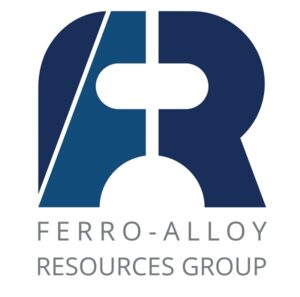In 1831, Swedish scientist Sefstrom officially discovered vanadium, naming it after Vanadis, the Swedish Goddess of Beauty and Fertility, inspired by the attractive brilliant colours of its compounds. This name proved fitting, as vanadium has led to numerous scientific and technological advancements for over 150 years, continually contributing to new material developments beneficial to humanity.
The use of vanadium dates back to the 3rd century BC with the production of super-strong Damascus steel. Its industrial use became prominent in 1905 when Henry Ford utilised vanadium-enriched steel for the Model-T, realising that this would make the car both stronger and lighter, addressing the need for higher safety.
Vanadium is a grey, soft, and ductile high-value metal with unique characteristics, making it valuable in the steel, alloy, and chemical sectors. It also serves as a fully reusable battery material. More than 85% of vanadium is extracted from magnetite and titano-magnetite ores, often as a co-product with iron in steel production. It can also be recovered from fly ash, petroleum residues, alumina slag, and recycled spent catalysts used in crude oil refining.
Globally, over 85% of vanadium consumption is in the steel industry, primarily in the form of ferro-vanadium. Ferrovanadium is an alloy used in high-strength low-alloy (HSLA) steels for construction, pipelines, tool steels, jet engines, axles, crankshafts, and reinforcing bars. Even in low concentrations, vanadium significantly enhances steel’s strength and hardness. This high-strength vanadium steel allows for less steel use, resulting in better economics, lightweight structures, and reduced environmental impacts, ultimately saving capital.
Nearly 75% of vanadium production is dedicated to ferrovanadium for HSLA steels used in construction and rebar. Vanadium enhances corrosion resistance in tool steels and is utilised in tube and pipe manufacturing, as well as in the automotive industry for components like hoods, door panels, and piston rods.
When mixed with aluminium, vanadium strengthens and promotes thermal stability in titanium alloys, which are heavily used in the aviation sector for jet engines, airframes, and spacecraft, offering a high strength-to-weight ratio for fuel efficiency. Its low neutron absorption and resistance to high-temperature stress make it suitable for nuclear reactors. In the chemical industry, vanadium is used in dye manufacturing, glass and ceramics production, and as a catalyst in sulfuric acid production, and can be combined with gallium to form superconductive magnets.
Vanadium also plays a role in health, used in supplements for treating, preventing, and managing various health issues. Lithium/silver/vanadium oxide batteries are essential for pacemakers and other critical medical devices.
A notable emerging application is energy storage through vanadium redox flow batteries (VRFBs). VRFBs offer reliable, long-duration storage without degradation or thermal runaway, suitable for large-scale applications like renewable integration, backup storage for critical services, and power grids. These flow batteries store energy in liquid vanadium electrolyte that never degrades, allowing hardware recycling and indefinite reuse of the vanadium electrolyte. They have the potential to revolutionise power grids and sustainable energy storage applications.
In electric vehicles (EVs), vanadium-lithium batteries can extend range and capacity compared to conventional lithium-ion technology. Vanadium also reduces carbon and weight while enhancing tensile strength and ductility in alloys and steel.
In smart buildings, windows with vanadium dioxide can save more energy by preventing heat loss in cold climates and reflecting infrared radiation in hot climates. Additionally, vanadium’s unique ability to defy the Wiedemann-Franz Law, which states that good conductors of electricity are also good conductors of heat, can be exploited to dissipate heat in engines, computers, robotics, and energy storage.
Vanadium’s diverse applications and unique properties make it a crucial element in various industries, from steel production and aerospace to energy storage and smart building technology, continually driving innovations and contributing to technological advancements.
Ferro-Alloy Resources Ltd (LON:FAR) is developing the giant Balasausqandiq vanadium deposit in Kyzylordinskaya oblast of southern Kazakhstan. The ore at this deposit is unlike that of nearly all other primary vanadium deposits and is capable of being treated by a much lower cost process.


